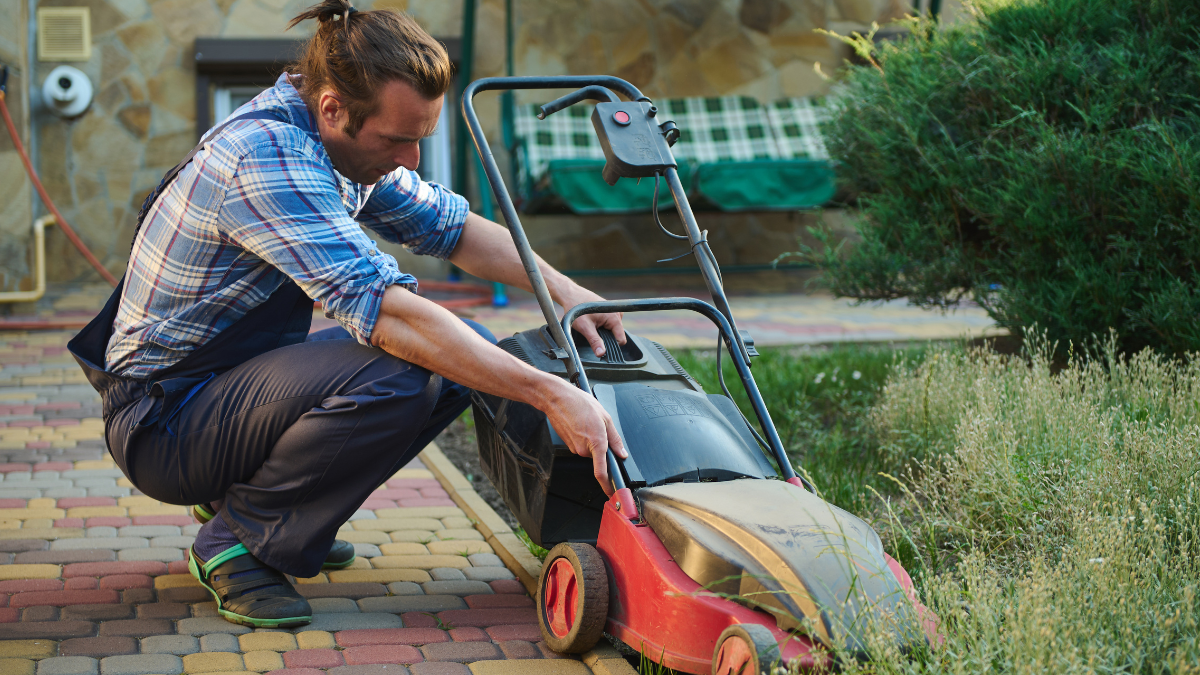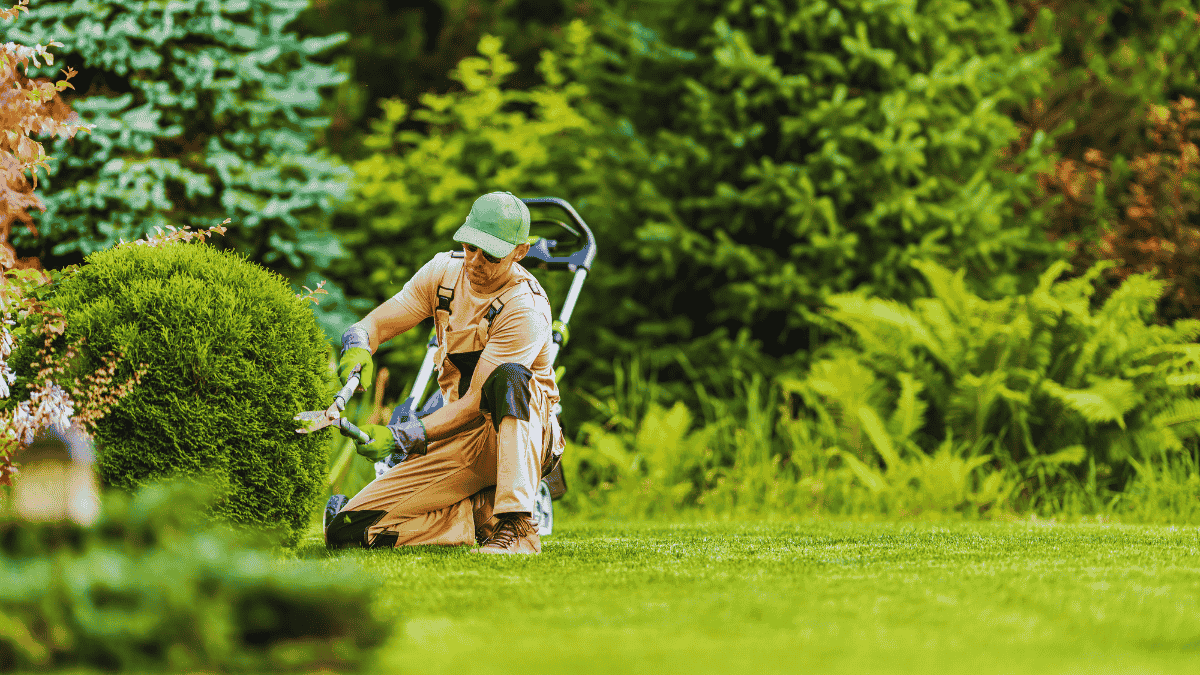Spring feels like a fresh start. Flowers begin to bloom. The sun feels warmer. And your lawn? It’s ready to wake up. But it needs a little help after the long winter. That’s where spring lawn treatments come in.
Your lawn has been through a lot. Cold winds. Ice. Snow. Maybe even salt from the roads. All of this can leave the grass weak and tired. So, it’s important to take care of it early. With the right steps, your lawn can grow thick, green, and healthy again.
Why Spring Lawn Treatments Matter
When spring starts, your grass begins to grow again. But it can’t grow strong if the soil is packed down or missing nutrients. That’s why spring lawn treatments are important. They help give your lawn a strong base.
Without help, weeds can take over. Bugs might show up. Bare patches may stay bare. But with proper care, your grass can get everything it needs. Think of it like feeding your lawn a good breakfast to start the day.
Start with a Clean-Up
Before anything is added, cleaning the yard is a good idea. Dead leaves, sticks, and other junk should be removed. They block sunlight. They also stop water from reaching the roots.
Raking the lawn helps loosen the soil too. It also pulls out old grass that didn’t survive the winter. This makes space for new growth.
Aerating the Lawn
Sometimes the ground gets hard after winter. When this happens, water and air can’t reach deep into the soil. That’s bad for the roots.
Aeration helps fix this. Small holes are made in the lawn. These holes let air, water, and nutrients get in. This helps the roots grow deep and strong. You can rent a machine to do this or call a professional.
Fertilizing at the Right Time
Grass needs food. That’s what fertilizer does. It gives the lawn nutrients like nitrogen, phosphorus, and potassium. But timing is important.
The best time to apply fertilizer is early in spring, just when the grass starts growing. Don’t do it too early. If it’s still cold, the grass won’t use the nutrients. Most people apply it in April or early May, depending on the weather.
This is called part of your spring lawn treatment applications. You can use slow-release fertilizer so the grass gets fed over time.
Tackling Weeds Early
Weeds love spring too. They try to grow fast and take over. If you wait too long, they spread everywhere. That’s why weed control is a key part of spring lawn treatments.
A pre-emergent weed killer can be used. It stops weed seeds from growing. You can also pull out visible weeds by hand. The sooner you start, the easier it is to control them all season.
When and How to Apply Insecticide to Your Lawn
Some bugs are okay for the yard. But others can harm your grass. Grubs, chinch bugs, and sod webworms can all do damage. You might not see them at first. But the signs show up later—brown patches and thinning spots.
Spring is a good time to stop them before they grow. If you’ve had bug problems before, insecticide can be applied. Always read the label. It should say when and how to apply insecticide to your lawn. You want to protect your lawn, not harm it.
Apply insecticide when the ground is moist. And don’t apply it on windy days. Water the lawn after applying, unless the label says not to. If you’re not sure, it’s always okay to ask an expert.
Seeding for Thicker Grass
If your lawn has bare spots, spring is a great time to fix them. Grass seed can be spread over the lawn. This is called overseeding. It fills in empty spots and helps prevent weeds from moving in.
After seeding, the lawn should be kept moist. Water lightly every day until the seeds sprout. Then, reduce watering to just a few times a week. Avoid using weed control products right after seeding. They can stop the new grass from growing.
Watering Wisely
Spring rains help a lot. But some weeks may be dry. Lawns still need water to grow. A good rule is about 2.5 cm (1 inch) of water per week. That includes rain.
It’s best to water early in the morning. This gives the lawn time to dry out during the day. Watering at night can lead to fungus. A sprinkler or soaker hose can help spread water evenly.
Mowing the Right Way
It might be tempting to cut the grass short. But that’s not good for the lawn. Taller grass helps shade the soil. It also keeps weeds away.
Set the mower blades high. Don’t cut more than one-third of the grass at once. And keep the blades sharp. Dull blades tear the grass. That makes it weak and dry.
Mow regularly, but not too often. If the grass grows fast, once a week is fine. Let the clippings stay on the lawn if they’re small. They break down and add nutrients back into the soil.
Don’t Forget the Edges
Neat edges make a lawn look finished. Use a trimmer around sidewalks, driveways, and flower beds. It makes the yard look tidy. It also keeps grass from spreading where it shouldn’t.
This is a small step, but it adds to the big picture. A well-edged lawn shows care and attention.
Should You Hire a Lawn Pro?
Doing all of this takes time. And sometimes, things can go wrong. That’s where pros can help. Top professional lawn treatment services near me can handle the tough stuff.
They know what works best in your area. They use the right products. And they know how to treat pests and weeds the safe way. If you’re busy or just want perfect results, it might be worth it.
So, if you’ve ever searched “Find top custom lawn treatment services near me,” now’s a great time to call. Even one visit in spring can make a difference for the rest of the year.
Spring in Florida Means It’s Time
If you’re in Florida or anywhere nearby, spring arrives early. As temperatures rise and lawns start to green up, it’s the perfect time to get started.
The weather is warming. Rain showers are frequent. And the grass is beginning to grow fast. That’s why early spring lawn treatments are essential. Wait too long, and you’ll miss the chance to give your yard a strong, healthy start.
Begin with what you can. Rake. Feed. Water. Mow. Or call in the pros if you need a hand. Your lawn will thank you all season long.
Ready for a Lush Lawn?
Your yard doesn’t need to be perfect. But it can be better with just a little care. Spring is your chance to start fresh. You don’t need fancy tools or years of experience. Just a little time and attention.
So grab your rake. Dust off the mower. And treat your lawn like the living thing it is. It’s waiting to grow.



